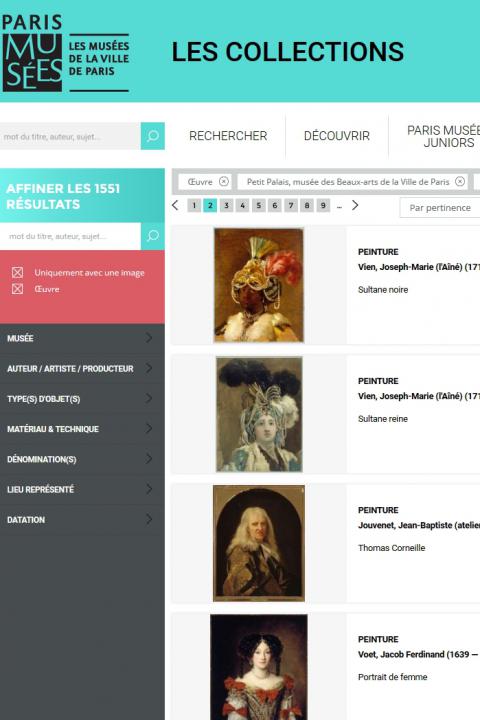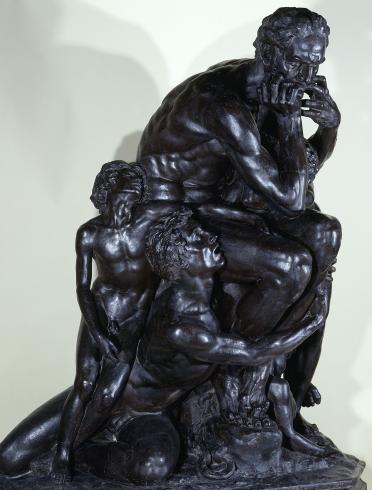Ugolino, which was completed in 1861, marked the end of Carpeaux’s studies at the French Academy in Rome.This masterly group is no longer the work of a student, a fact which did not escape the attention of either the French in Rome or the Parisian administrators of the French School of Fine Art, who supported the artist in this huge undertaking.
The subject is taken from Dante’s Divine Comedy in which the poet describes Ugolino, the tyrant of Pisa chained and walled up in the Tower of Hunger with his offspring (Canto XXXIII). When his children see him gnawing his hands in despair, they offer themselves to be devoured out of filial piety. The work acknowledges its debt to the great models of sculpture: the interlacing of bodies is inspired by a famous group of classical antiquity, Laocoon, in the Vatican Belvedere Palace; the musculature and Ugolino’s expression recall Michelangelo. Each element has been the subject of many sketches and drafts combined in a twisted pyramid shape. It is possible to see in this despairing Ugolino Carpeaux the artist himself, already tormented by the act of creation, debt and the authorities.
The state commissioned a bronze in 1862 (Musée d’Orsay) from the 1861 plaster original. The example in the Petit Palais was patinated by Carpeaux himself in order to study the final appearance of the work before casting.
A. S.

City of Paris municipal collection's website
The collections portal can be used to search the collections of Paris’s 14 municipal museums (approximately 336,000 works, including 43,000 belonging to the Petit Palais).
It is also possible to download around 12,000 images of the museum’s works free of charge.
Access the Museums of the City of Paris collections portal
Extern databases
Discover a selection of databases online presenting works from the Petit Palais or documents concerning the history of the museum.

